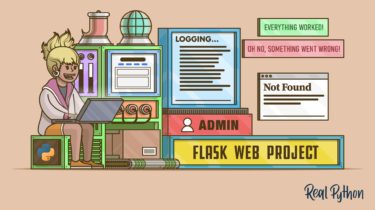Author: Deep Learner
Coforge Teams Up with Microsoft to Drive Generative AI Adoption in Enterprises
In a strategic move, Coforge Limited has joined forces with Microsoft Azure OpenAI Service to propel the adoption of Generative Artificial Intelligence (AI) across enterprises. The collaboration aims to provide enterprises with Coforge’s Generative AI solutions, offering a toolkit to tackle intricate challenges and unlock growth opportunities through the application of AI. This initiative reflects Coforge’s dedication to building a collaborative ecosystem that encourages innovation, knowledge sharing, and the exchange of best practices in Generative AI adoption. As part of […]
Read moreResearch at Microsoft 2023: A year of groundbreaking AI advances and discoveries
In this article It isn’t often that researchers at the cutting edge of technology see something that blows their minds. But that’s exactly what happened in 2023, when AI experts began interacting with GPT-4, a large language model (LLM) created by researchers at OpenAI that was
Read moreGPT-4 Empowered Coscientist Revolutionizes AI-Driven Chemical Synthesis
In a groundbreaking development, chemists have harnessed the power of artificial intelligence to design and execute intricate chemical reactions using a robotic laboratory set-up. Named Coscientist, this system utilizes the latest large language models (LLMs), including GPT-4, to autonomously plan, code, and conduct reactions, producing compounds such as paracetamol and aspirin in real-life laboratory settings. Led by chemist Gabe Gomes from Carnegie Mellon University, the research team detailed their innovative approach in a report published in Nature on December 20. […]
Read moreOpenAI Unveils Guidelines to Mitigate “Catastrophic Risks” in AI Development
In a strategic move to address the growing concerns surrounding the risks of artificial intelligence, OpenAI, the developer behind ChatGPT, has issued comprehensive guidelines for users. The initiative comes in the wake of CEO Sam Altman’s return to helm the Microsoft-owned organization. OpenAI’s latest guidelines, outlined in a document termed “Preparedness Framework,” shed light on the critical aspect of assessing “catastrophic risks” associated with the development of AI models. The document emphasizes that current scientific studies on these risks fall […]
Read morePandas DataFrame Copy Function with Examples
Introduction In this article, we will cover how to use the Pandas Copy function to copy DataFrames along with syntax and examples. Syntax of Pandas Copy Function | pandas.DataFrame.copy The Pandas Copy function is part of the DataFrame class and follows a simple syntax: DataFrame.copy(deep=True) deep : This parameter specifies whether to create a deep copy or a shallow copy of the DataFrame. By default, it is set to True for a deep copy. Example – 1: Copy Pandas DataFrame […]
Read moreAdd Logging and Notification Messages to Flask Web Projects
After implementing the main functionality of a web project, you may find that your app is rough around the edges. Often, this boils down to the user experience (UX) of your project. For example, when you send a form, you don’t receive a success message, although everything worked fine. You want to build an immersive experience, but wrong URLs display unwelcoming error messages. Luckily, you can get valuable information from Flask through logging. As an admin of a web project, […]
Read moreResearch Focus: Week of December 18, 2023
Welcome to Research Focus, a series of blog posts that highlights notable publications, events, code/datasets, new hires and other milestones from across the research community at Microsoft. NEW RESEARCH NASerEx: Optimizing Early Exits via AutoML for Scalable Efficient Inference in Big Image Streams Deep Neural Networks (DNNs) are essentially stacked transformation functions (layers) that generate progressively complex features/encoding. This makes them universal approximators and allows for unprecedented success in complex tasks. This inferential effectiveness comes at
Read moreHow many CPU cores can you actually use in parallel?
When you’re running a CPU-intensive parallel program, you often want to have a thread or process pool sized by the number of CPU cores on your machine. Fewer threads and you’re not taking advantage of all the cores, more than that and your program will start running slower as multiple threads compete for the same core. Or that’s the theory, anyway. So how do you check how many cores your computer has? And is this actually good advice? It turns […]
Read moreStanford Students’ PIGEON AI Outperforms Humans in Geolocation Challenge
In a groundbreaking project named Predicting Image Geolocations (PIGEON), three Stanford graduate students have demonstrated the remarkable geolocation capabilities of artificial intelligence (AI). The project, initially designed to identify locations on Google Street View, showcased AI’s potential to accurately determine the origin of personal photos it had never encountered before. Inspired by their shared enthusiasm for the online game GeoGuessr, the trio—Michal Skreta, Silas Alberti, and Lukas Haas—sought to develop an AI player capable of outperforming human participants in geolocating […]
Read more
